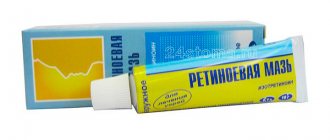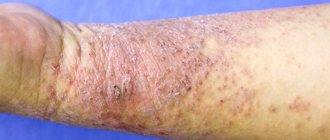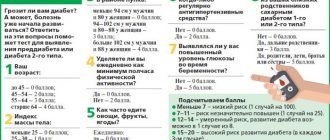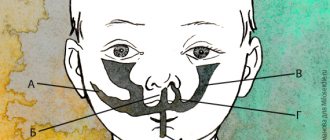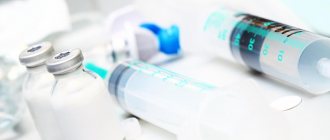WHY DO YOU NEED DIASKIN?
Many people confuse Diaskintest with a vaccine. But this is not true at all. There is no point in refusing the test, since up to 95% of adults today are infected with Koch's bacillus. That is, they are carriers of tuberculosis bacteria. This carriage is called the latent form of the disease - when a person is not sick, but the disease can develop under certain conditions. This option is observed in 1% of patients. Moreover, the infectious process can be asymptomatic for a long time. Without testing, it is impossible to identify it only by external signs. And the earlier the tuberculosis process is detected, the higher the patient’s chances of recovery.
FREQUENCY OF SAMPLE PERFORMANCE
According to the recommendation of the Russian Ministry of Health, Diaskintest must be performed once a year at the age of 8-17 years. When deciding how often you can test, take into account some nuances:
- The test can be done no earlier than a month after any vaccination.
- A month must pass after recovery from any infectious disease.
- If the previous test result was negative, the next test can be done after 2 months.
A control test for people registered at an anti-tuberculosis dispensary is carried out every 3-6 months.
If a child has a positive Mantoux test, he can perform Diaskintest from the age of 1 year.
What is Diaskintest at school
Russia is one of the few countries in the world where vaccination against tuberculosis is mandatory. Each child is given the BCG vaccine at birth, and then, several years later, according to the National Preventive Vaccination Calendar, revaccination is carried out. Thanks to this systematic approach, our country maintains a low incidence of tuberculosis.
However, such cases still occur. Tuberculosis is an insidious disease and can affect people with reduced immunity. Special tests can determine the presence of a pathogen in the body. Previously, only the Mantoux test was used for this purpose. There were no alternatives to it, so doctors had to put up with its “shortcomings.”
Firstly, a positive reaction, which often occurs not at all as a response to infection, but after BCG vaccination. Secondly, a positive reaction can persist for many years in people who have had the disease, but no longer pose a danger to others.
When testing a child and receiving a positive result, the doctor always has a difficult decision to make. Additional diagnostics, specific treatment - all this may not be necessary, but is prescribed by a specialist to dispel doubts.
With the advent of Diaskintest, these shortcomings are a thing of the past. The drug does not react with strains that are introduced into the body during vaccination. It is a combination of antigens of two types of tuberculosis bacteria that most often cause the disease. If these bacteria are not in the body, then there will be no reaction. Therefore, the question - which is better, Mantoux or Diaskintest - was decided by the Ministry of Health back in 2009.
“According to general recommendations, children aged one to seven years are given a Mantoux test,” said pediatrician Alexander Ushakov. - After eight years and up to 17 years - only Diaskintest. This drug is also used in adults. In addition, it is prescribed for the diagnosis of tuberculosis if the Mantoux test gives a positive result. Then Mantoux and Diaskintest are carried out almost simultaneously, a few days later.”
COMPOSITION OF THE PREPARATION
The drug contains:
- Proteins of tuberculosis bacteria CFP10 ESAT6, prepared in a special way.
- Phenol as a preservative.
- Polysorbate as a stabilizer.
- Phosphoric acid sodium, potassium.
- Sodium chloride.
- Water.
Diaskintest is a Russian drug. You can get tested at various institutions. Most often, the test is performed in kindergartens, schools, clinics, or in anti-tuberculosis institutes, centers, and dispensaries. For adults, examination is prescribed if there is contact with patients or in cases where a person is registered at a dispensary.
Contraindications
Only a doctor can decide whether Diaskintest is suitable for testing for tuberculosis.
The Diaskintest test is not recommended and is not performed on children under 7 years of age inclusive.
"Diaskintest" is contraindicated for persons with allergic and autoimmune diseases! Also, the use of Diaskintest is contraindicated in the following cases:
- Acute diseases or exacerbation of chronic diseases (except for cases of suspected tuberculosis).
- Skin diseases.
- Epilepsy.
- In children's groups where there is a quarantine for childhood infections, the test is carried out only after the quarantine is lifted.
HOW RESULTS ARE EVALUATED
The reaction is checked 3-4 days after the test. The result can be positive, negative or false positive (doubtful). A negative result is the norm for children and adults. If there is no reaction at all, there should be no papules or redness.
The first reaction can be observed 6 hours after administration of the drug. The test result is the response of a person’s immune system. Inflammation and redness may be observed on the first day after testing. The response may increase over 72 hours, with maximum results observed on the third day in adults and children. Then the reaction fades away.
Diaskintest - what not to do so as not to “smear” the result
In order for the Diaskintest assessment to be objective, you should follow the rules of caution after the injection. Despite its low sensitivity to liquid ingress, it is still not recommended to wet the injection site. Otherwise, the reaction may be false positive.
In addition, you should not scratch the injection site to avoid causing swelling and redness. Do not rub or cover with a band-aid, which parents sometimes do when bathing a child, to prevent water from getting into the wound. Since the drug is injected under the skin on your arm, it is best to keep the pen away from the water while bathing in the shower. Covering with a band-aid and trying to thoroughly wipe the papule dry can lead to an unpleasant reaction. These rules must be followed until the sample is “read” by a specialist for three days.
Diaskintest is also carried out for adults, but strictly according to indications. It is done only in tuberculosis dispensaries. And they are used directly to diagnose tuberculosis or evaluate the effectiveness of treatment previously prescribed by a doctor. The method for assessing the result is the same as the rules for preparing for the test and recommendations after it.
POSITIVE RESULT
The presence of a papule of any size indicates that the patient is infected with tuberculosis bacteria. In adults, the size of the inflammatory papule is not critical. However, for ease of assessment, a general classification of swelling sizes is used:
- Less than 5 mm – weak.
- No more than 9 mm – moderate.
- Over 10 mm – strong.
The more pronounced the reaction, the more pathogen is present in the human body. The patient must go to the dispensary for treatment and registration.
In children, the presence of a papule also requires immediate consultation with a doctor. Additional studies will be needed to assess the form of the disease - active or latent. Special treatment is also used.
Diaskintest®
The test is carried out as prescribed by a doctor for children, adolescents and adults by a specially trained nurse who is authorized to conduct intradermal tests. The drug is administered strictly intradermally. To carry out the test, tuberculin syringes and thin short needles with an oblique cut are used. Before use, you must check their release date and expiration date.
Once opened, the bottle with the drug can be stored for no more than 2 hours. Use a syringe to draw 0.2 ml (two doses) of the Diaskintest® drug and release the solution to the 0.1 ml mark into a sterile cotton swab. The test is carried out with the subject in a sitting position without a sudden change in body position after the procedure (see section “Special instructions”).
After treating the skin on the inner surface of the middle third of the forearm with 70% ethyl alcohol, 0.1 ml of Diaskintest® is injected into the upper layers of the stretched skin parallel to its surface. When the test is performed, as a rule, a papule in the form of a “lemon peel” is formed in the skin, 7-10 mm in diameter, whitish in color.
For persons with a history of nonspecific allergies, the test is recommended to be carried out while taking desensitizing drugs for 7 days (5 days before the test and 2 days after it).
Accounting for results
The result of the test is assessed by a doctor or trained nurse 72 hours after its placement, by measuring with a transparent ruler the transverse (relative to the axis of the forearm) size of the hyperemia and infiltrate (papules), in mm. Hyperemia is taken into account only in the absence of infiltration.
Criteria for assessing the response to the Diaskintest® test are presented below:
| Reaction category | Criteria for evaluation |
| Negative | Complete absence of infiltration and hyperemia or the presence of a “puncture reaction” of up to 2 mm. |
| Doubtful | The presence of hyperemia without infiltration. |
| Positive | The presence of infiltrate (papules) of any size. |
| Weakly expressed | The size of the infiltrate is up to 5 mm. |
| Moderately pronounced | The size of the infiltrate is from 5 to 9 mm. |
| Expressed | The size of the infiltrate is from 10 to 14 mm. |
| Hyperergic | The size of the infiltrate is 15 mm or more; vesiculonecrotic changes; and (or) lymphangitis, lymphadenitis, regardless of the size of the infiltrate. |
In contrast to a delayed-type hypersensitivity reaction, skin manifestations of a nonspecific allergy (mainly hyperemia) to the drug are usually observed immediately after the test and usually disappear after 48-72 hours. Diaskintest® does not cause a delayed-type hypersensitivity reaction associated with BCG vaccination.
In the post-marketing period, isolated cases of reactions at the injection site (petechiae, itching, pain, swelling, inflammation, numbness) were recorded, which, in the absence of a papule, cannot be regarded as a positive response to the Diaskintest® test. Persons with a questionable and positive reaction to Diaskintest® are subject to a comprehensive examination for tuberculosis.
Not all infected individuals may develop delayed-type hypersensitivity to the Diaskintest® test. There are factors that reduce this reaction, such as:
— HIV,
- active tuberculosis with pronounced immunopathological disorders. caused by the severe course of the process,
- concomitant diseases accompanied by an immunodeficiency state.
The accounting documents used to register sample results indicate: a) the name of the drug; b) manufacturer, batch number, expiration date; c) date of sample collection; d) site of drug administration (left or right forearm); d) test result.
SIDE EFFECTS, COMPLICATIONS
Diaskintest is harmless for patients of any age, so there is no fear of a reaction in children and adults. Any side effects can be observed only in rare cases in the form of symptoms indicating general intoxication. These include headache and weakness, general malaise, and increased temperature. This is a normal reaction. Small bruises at the injection site are also not a cause for concern.
A hyperergic reaction of the body to the administration of the drug may also occur - the formation of a large papule with a diameter of more than 15 mm. The same reaction includes severe inflammation and irritation of the tissue around the papule.
BEHAVIOR AFTER THE TEST
After placing Diaskintest, you can wet your hand, take a shower or bath. It is strictly not recommended to scratch the injection site, cover this area with a plaster, or wrap it with a bandage. Also, do not lubricate the injection site with creams, detergents and other cosmetics. There are no dietary restrictions.
Diaskintest has high sensitivity - about 80%, and accuracy reaches almost 100%. But, like any medical test method, this sample can make mistakes.
Diaskintest is many times more accurate than Mantoux, since it does not show positive reactions in people with acquired anti-tuberculosis immunity. That is why this test is considered the most reliable and safe. With its help, you can find out whether the patient is sick at the moment, and analyze whether the person will get sick in 1-2 years.
"DIASKINTEST" - tuberculosis allergen
Drug for diagnosing tuberculosis
, Russia.
A drug for the diagnosis of tuberculosis: developed in 2008. It is a complex of recombinant proteins CFP-10 and ESAT-6, intended for intradermal administration.
Used: for children over 8 years old instead of the Mantoux test.
Advantages of diagnosing tuberculosis with Diaskintest in children:
- has the highest sensitivity (98 - 100%)
- has the highest specificity (90 - 100%)
- greater safety and higher accuracy compared to the Mantoux test
- higher specificity than the imported allergen T-Spot
- accurate diagnosis of infection occurring in a latent form
- contains two antigens present in virulent strains of Mycobacterium tuberculosis and absent in the BCG vaccine strain
- When using Diaskintest, allergic reactions practically do not occur
- There are no age restrictions for the use of the drug Diaskintest


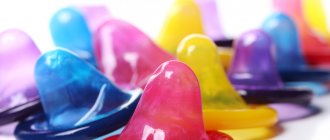


![Table 2. Hemodynamic definition of PH (adapted from [2] with modifications)](https://ms-pi.ru/wp-content/uploads/tablica-2-gemodinamicheskoe-opredelenie-lg-adaptirovano-iz-2-s-izmeneniyami-330x140.jpg)
